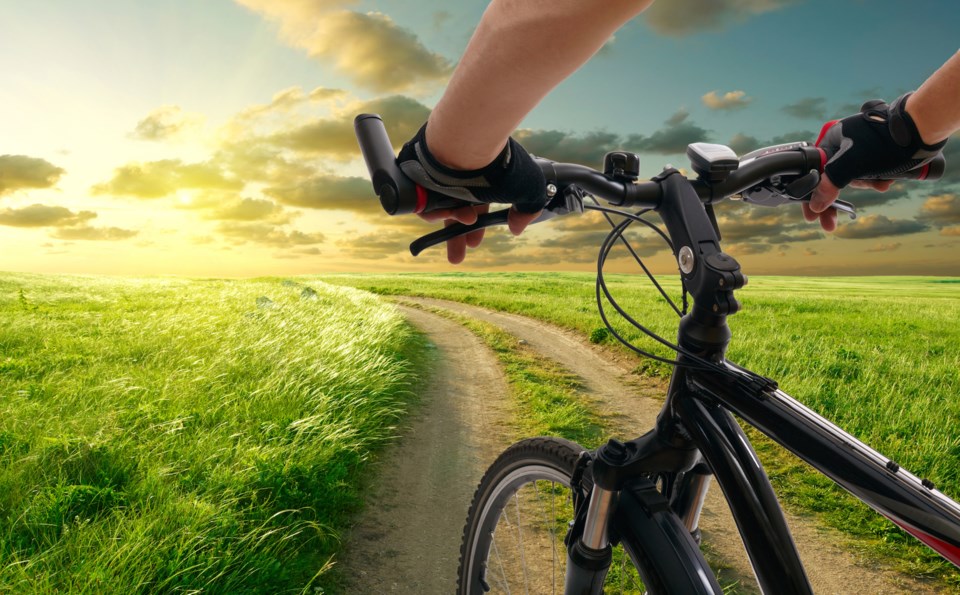NEWS RELEASE
ONTARIO PROVINCIAL POLICE
*************************
COUNTY OF WELLINGTON, ONT - The Wellington County Ontario Provincial Police (OPP) are tuning up their bikes for another successful season of their Police Bicycle Patrol Program.
Since its revitalization last year the program has grown to include 30 specially-trained officers utilizing eight police-packaged Rocky Mountain and Devinci brand mountain bikes each utilized to cover local trails, parks, conservation areas, specialty venues and municipal streets across all of Wellington County. "Riding" on the success of the 2016 season, the OPP will continue to focus on identified hot spots such as trails, parks, known criminal and traffic enforcement locations through a highly visible police presence as well as participating in important community policing initiatives.
"The rules set out for drivers, whether of a motor vehicle or a bicycle are in-place to help reduce the likelihood of injury. Given the obvious vulnerability of area cyclists extra diligence is required as they both share the use of our local roadways." says OPP Detachment Commander Scott Lawson.
Some quick tips and reminders to both drivers and cyclists of Wellington County
The Ontario Highway Traffic Act (HTA) defines bicycles as a vehicle, and like any vehicle using the road the cyclist must adhere to the rules of the road. Cyclists must also follow the same rules as motor vehicle drivers and are subject to the same fines. Cyclists must signal their turns and stops, obey road signs and traffic controls such as stop signs and traffic signals.
Cyclist must also have all safety equipment in working order. This includes brakes, lighting and reflectors. Lights are required if you are riding any time from ½ hour before sunset through to ½ after sunrise. Bicycles are also required to have an audible signaling device such as a bell or a horn.
Cycling among motor vehicles
Drive as close as practicable to the right side of the road, signal and shoulder check before attempting a lane change and obey all traffic signs, signals and laws. In less populated areas, motorists may not be anticipating cyclists, so drive defensively.
On two lane roads, watch out for motorists travelling in the opposite direction overtaking another vehicle, by moving into your lane. Because bicycles are relatively small, they often can't be seen from a distance. Anticipate such situations and take steps to make yourself more visible by wearing brightly coloured clothing and a helmet.
Travelling in groups
Here are some safety tips to keep in mind when travelling in groups.
- Ride in single file on the road and at least a metre apart. Increase this rider to rider gap at higher speeds or travelling down hills.
- If you are travelling in a larger group, break up into smaller groups of about six or less. Keep about a kilometre between groups to allow traffic to pass.
Legal responsibility
The following are some key sections of the HTA concerning cyclists.
Ride in the designated direction on one-way streets.
Ride as close to the edge of the road as practicable except when preparing to turn left. Remember that you must also ride far enough out from the curb to maintain a straight line, clear of sewer grates, debris, potholes, and parked car doors. You may occupy any part of a lane when your safety warrants it. Never compromise your safety for the convenience of a motorist behind you.
Stop for pedestrians at crosswalks. If utilizing a crosswalk a cyclist must dismount their bike and walk across.
Reflective tape is mandatory on the front and rear forks; white on the front forks and red on the rear.
By law, cyclists must identify themselves to police when stopped for an offence.
Cycling is prohibited on expressways such as the 401 and on any road that has signage prohibiting bicycles.
Passengers are not allowed on a bicycle designed for one person.
You are not permitted to attach yourself to the outside of another vehicle or streetcar for the purpose of "hitching a ride".
All cyclists under the age of eighteen must wear an approved helmet or risk a fine of $80. Guardians can also be charged.
Dismounted bicyclist - Cyclists are required to ride on the right-hand side of the road. When walking a bike on a highway where there are no sidewalks, a cyclist is considered a pedestrian and should walk on the left-hand side of the road facing traffic. If it is not safe to cross the road to face traffic, a cyclist may walk the bike on the right-hand side of the road.
Safety improves when all traffic uses the same rules of the road. By everyone operating under these rules, actions become more predictable. Drivers can anticipate a cyclist move and plan accordingly. Likewise, cyclists too can anticipate and deal safely with the actions of others.
*************************



